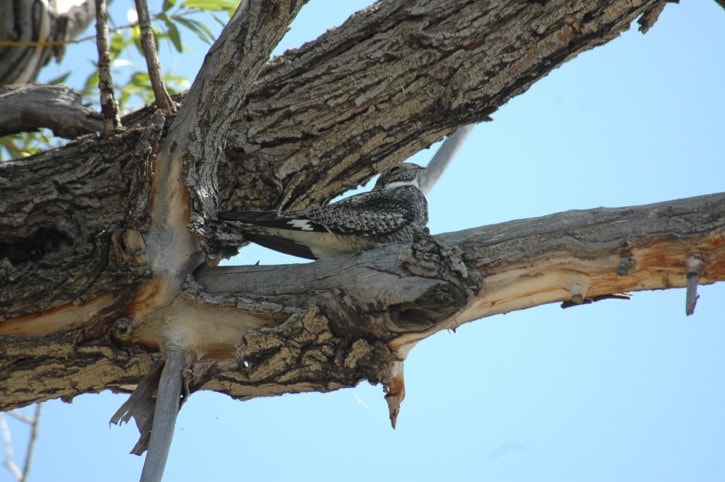The Common Nighthawk is a member of a small bird family called Caprimulgidae. There are only seven species in the family in North America, four of which occur in Canada. Only the Common Nighthawk and the Common Poorwill are found in B.C.
All of these species are insect-eaters; food is caught on the wing. To better enable them to feed in this manner, they have developed a couple of interesting physical features. Their beaks are almost nonexistent; instead they have a huge gaping mouth. This allows them to fly through the air and simply engulf their prey in their mouths.
They also have very long, narrow wings. This makes them strong fliers and enables them to change direction very quickly as they pursue insects in the air.
They are known to be voracious eaters. The stomach of one dead Common Nighthawk was found to contain 2,175 flying ants! It takes quite a while to catch that many insects, so when feeding they remain in the air for hours at a time.
When they aren’t feeding they rest. As you can see from the accompanying picture, resting is done by lying length-ways on a branch.
Since they never perch in a typical birdlike manner, they have lost the ability to do so. Their feet are tiny and absolutely useless for perching. Feeding is generally done in the evening and at night, hence the name nighthawk.
The Common Nighthawk is about 23 cm. in length with a wingspan of well over 40 cm. The plumage is mottled black and brown, with a white throat and prominent white patches in the wings. As you watch them feeding overhead you notice their very graceful, although somewhat erratic, flight.
Nighthawks, and other members of the family, make very little effort to build nests. Eggs, generally two, are laid directly onto the ground in open areas, usually on sand, gravel or moss. They have also been discovered nesting on flat gravelled roofs. Our immediate area does not offer much nesting habitat, so Common Nighthawks are not particularly common in our vicinity. But when they are around, warm summer evenings are the best time to see them. I saw my first ones of the year just last week.
